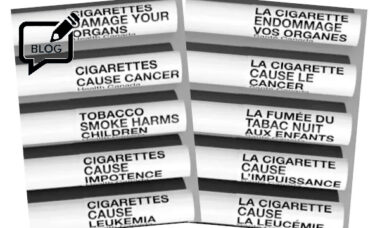 Canada’s decision to require health warnings on individual cigarettes and little cigars was described by Carolyn Bennett, the minister for mental health and addictions, as a “bold action”. But it may also be an act of slight desperation.
Canada’s decision to require health warnings on individual cigarettes and little cigars was described by Carolyn Bennett, the minister for mental health and addictions, as a “bold action”. But it may also be an act of slight desperation.
While there are merits to the idea from a tobacco control point of view – it furthers the omnipresence of warnings, it makes them visible to kids who bum a single cigarette from a friend, and it adds increased awkwardness for manufacturers – it’s also questionable how much it can really be expected to change behaviours.
Smokers mostly tune out health warnings anyway, after all (they know but they don’t want to be reminded), and small textual ones are particularly easy to ignore. Plus, cigarettes spend most of their life invisible in the pack before being set on fire and rapidly disappearing; the exposure period for these warnings will be minimal compared to those on packs.
Yet Canada has to introduce them, because while smoking persists – and it is now perhaps largely the province of the more diehard or devil-may-care smokers who are tougher than anyone else for tobacco control to reach – inaction is not perceived as an option.
So what can be done about it?
The problem for tobacco control is that not much more remains that can be done.
Sure, taxes can still be raised ever higher. Retail channels can be further limited.
But short of completely banning combustibles (which New Zealand will effectively, if very slowly, do with its progressively increasing minimum purchase age, likely to be emulated in some other countries) or mandating much lower nicotine levels (as the US Food and Drug Administration has considered), there is a decided lack of major new tools in the tobacco control arsenal. Virtually everything else has already been rolled out.
This is, surely, a major factor pushing regulators toward innovations like individual cigarette warnings. They may not add a great deal to the tobacco control effort in comparison with, say, taxation or health education, but even these small incremental measures keep the pressure up – and enable governments to be seen keeping the pressure up.
As yet, regulation of alternative products like heated tobacco, e-cigarettes and pouches hasn’t generally reached that level. Regulators still have the juicy low-hanging fruit of tobacco control (heated tobacco flavours, for example) to reach for. But it won’t be too many years before they reach the same situation they are now facing with cigarettes.
– Barnaby Page TobaccoIntelligence staff







